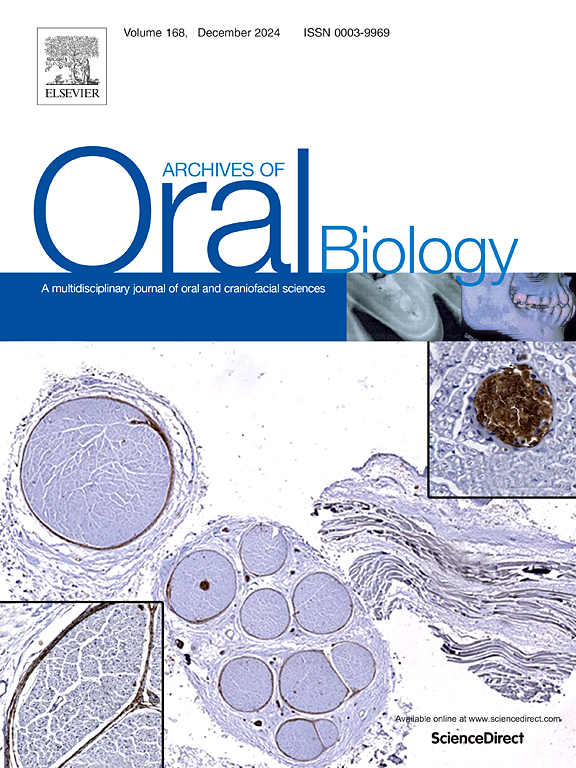The oral microbiota and its relationship to dental calculus and caries
IF 2.2
4区 医学
Q2 DENTISTRY, ORAL SURGERY & MEDICINE
引用次数: 0
Abstract
Objectives
In this review, we provide an overview of the composition of the microbiota associated with these two dental pathologies, caries and tartar, highlighting the microbial profiles associated with each pathology.
Design
This literature review was carried out by a manual search of two electronic databases, PubMed and Web of Science (WOS), using specific keywords to the two oral pathologies dental caries and calculus.
Results
The oral microbial community is known for its complexity, and comprises hundreds of species of different micro-organisms. Many of them, under the influence of endogenous and exogenous factors, can play a role in the onset and development of oral pathologies. Analysis of the microbial profiles of caries and dental calculus revealed that Streptococcus mutans and Lactobacillus species are abundant in the oral microbiota associated with caries whereas their presence is less reported in dental calculus. However, the three pathogens known as the "red complex", namely Porphyromonas, Tannarella and Treponema, which are associated with the development of periodontal pathology, are strongly present in the dental calculus microbiome.
Conclusion
The microbiota composition associated with dental caries and calculus highlights specific microbial signatures for each of the two oral pathologies, underscoring their differences and microbiological complexity, while the possible relationship between the formation of dental calculus and the development of caries remains unclear.
口腔微生物群及其与牙结石和龋齿的关系。
目的:在这篇综述中,我们概述了与龋齿和牙垢这两种牙齿病理相关的微生物群组成,重点介绍了与每种病理相关的微生物谱。设计:本文献综述采用人工检索PubMed和Web of Science (WOS)两个电子数据库,对龋齿和牙石两种口腔病理进行特定关键词检索。结果:口腔微生物群落以其复杂性而闻名,包括数百种不同的微生物。它们中的许多在内源性和外源性因素的影响下,可以在口腔病理的发生和发展中发挥作用。对龋齿和牙结石的微生物谱分析表明,变形链球菌和乳酸杆菌在与龋齿相关的口腔微生物群中含量丰富,而在牙结石中却较少报道。然而,被称为“红色复合体”的三种病原体,即卟啉单胞菌、Tannarella和密螺旋体,它们与牙周病理的发展有关,在牙石微生物群中大量存在。结论:与龋齿和牙石相关的微生物群组成突出了两种口腔病理的特定微生物特征,强调了它们的差异和微生物复杂性,而牙石形成与龋齿发展之间的可能关系尚不清楚。
本文章由计算机程序翻译,如有差异,请以英文原文为准。
求助全文
约1分钟内获得全文
求助全文
来源期刊

Archives of oral biology
医学-牙科与口腔外科
CiteScore
5.10
自引率
3.30%
发文量
177
审稿时长
26 days
期刊介绍:
Archives of Oral Biology is an international journal which aims to publish papers of the highest scientific quality in the oral and craniofacial sciences. The journal is particularly interested in research which advances knowledge in the mechanisms of craniofacial development and disease, including:
Cell and molecular biology
Molecular genetics
Immunology
Pathogenesis
Cellular microbiology
Embryology
Syndromology
Forensic dentistry
 求助内容:
求助内容: 应助结果提醒方式:
应助结果提醒方式:


